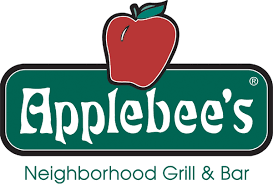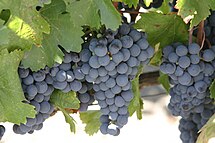 In today's "Super-Sized" age of the dollar menus, buy-one-get-ones, and over sized portions, restaurants like Appelbee's, Olive Garden, and T.G.I.Fridays rule the roost. Being from sub-suburban Minnesota (not a typo) I'm no stranger to chain restaurants. The town I grew up in wants a $20 steak for $7 and restaurants like Ruby Tuesdays and Red Robin can offer it to them. In the mid 90's, with the rise of the "neighborhood" franchise restaurant, our town absorbed the trend like a sponge. Before I knew it the family owned and operated ma' and pop shop restaurants were replaced by chains offering loud music, drink specials, pre-packaged foods and flare. Unfortunately, Minnesota is NOT an exception to the rule.
In today's "Super-Sized" age of the dollar menus, buy-one-get-ones, and over sized portions, restaurants like Appelbee's, Olive Garden, and T.G.I.Fridays rule the roost. Being from sub-suburban Minnesota (not a typo) I'm no stranger to chain restaurants. The town I grew up in wants a $20 steak for $7 and restaurants like Ruby Tuesdays and Red Robin can offer it to them. In the mid 90's, with the rise of the "neighborhood" franchise restaurant, our town absorbed the trend like a sponge. Before I knew it the family owned and operated ma' and pop shop restaurants were replaced by chains offering loud music, drink specials, pre-packaged foods and flare. Unfortunately, Minnesota is NOT an exception to the rule.Monday, June 28, 2010
"Gather 'round the generic stuff"
 In today's "Super-Sized" age of the dollar menus, buy-one-get-ones, and over sized portions, restaurants like Appelbee's, Olive Garden, and T.G.I.Fridays rule the roost. Being from sub-suburban Minnesota (not a typo) I'm no stranger to chain restaurants. The town I grew up in wants a $20 steak for $7 and restaurants like Ruby Tuesdays and Red Robin can offer it to them. In the mid 90's, with the rise of the "neighborhood" franchise restaurant, our town absorbed the trend like a sponge. Before I knew it the family owned and operated ma' and pop shop restaurants were replaced by chains offering loud music, drink specials, pre-packaged foods and flare. Unfortunately, Minnesota is NOT an exception to the rule.
In today's "Super-Sized" age of the dollar menus, buy-one-get-ones, and over sized portions, restaurants like Appelbee's, Olive Garden, and T.G.I.Fridays rule the roost. Being from sub-suburban Minnesota (not a typo) I'm no stranger to chain restaurants. The town I grew up in wants a $20 steak for $7 and restaurants like Ruby Tuesdays and Red Robin can offer it to them. In the mid 90's, with the rise of the "neighborhood" franchise restaurant, our town absorbed the trend like a sponge. Before I knew it the family owned and operated ma' and pop shop restaurants were replaced by chains offering loud music, drink specials, pre-packaged foods and flare. Unfortunately, Minnesota is NOT an exception to the rule.Monday, June 21, 2010
Malbec - Argentina's Bread & Butter
 I was very lucky last week to be able to sit down and taste with Julian Gomez, the export manager for the Enrique Foster line. It was a great tasting and we had a chance to try some really cool juice. After the tasting I got to thinking about Malbec and Argentina, 15 years ago production and quality were not the same in Argentina as it is today, but I think that can be said for a number of wine producing countries - both new and old world.
I was very lucky last week to be able to sit down and taste with Julian Gomez, the export manager for the Enrique Foster line. It was a great tasting and we had a chance to try some really cool juice. After the tasting I got to thinking about Malbec and Argentina, 15 years ago production and quality were not the same in Argentina as it is today, but I think that can be said for a number of wine producing countries - both new and old world.Nicholas Barth
Wine Director
Monday, June 14, 2010
Pinotage...ick!
 Last Thursday we did a Unique Varietal tasting at Cru Wine Online. We sampled wine made from fun grapes like Albarino, Verdejo, Chenin Blanc, Petit Verdot, Petite Sirah and Pinotage. I will admit to you I'm not the biggest fan of Pinotage, I think it tastes icky. And I am sure by this point in the blog you are either thinking "What is Pinotage?", "I'm not either" or "You haven't tried a good one." For those of you that aren't fans, I get it. For those of you that don't know the grape, it's South Africa's bread and butter red varietal (grape).
Last Thursday we did a Unique Varietal tasting at Cru Wine Online. We sampled wine made from fun grapes like Albarino, Verdejo, Chenin Blanc, Petit Verdot, Petite Sirah and Pinotage. I will admit to you I'm not the biggest fan of Pinotage, I think it tastes icky. And I am sure by this point in the blog you are either thinking "What is Pinotage?", "I'm not either" or "You haven't tried a good one." For those of you that aren't fans, I get it. For those of you that don't know the grape, it's South Africa's bread and butter red varietal (grape).The closest example I have found to palatable Pinotage is the Robertson Winery. It's super juicy and fruit forward and many of the earth tones (rubber band, tar, etc) are overpowered. So you could say that the only Pinotage I like tastes very little like Pinotage. It would be like drinking Mark West Pinot Noir because you like Pinot Noir, oh no he didn't! (Mark West Pinot Noir is likely 25% Syrah or something masking the low quality Pinot Noir grapes harvested to make this big seller. I'm not saying Mark West Pinot Noir isn't fine, it just isn't Pinot Noir, the grape is too light and the 25% "something else" masks the Pinot characteristics).
Nicholas Barth
Monday, June 7, 2010
Cru Wine Online is LIVE!
Cru Wine Online makes wine accessible by bringing tastings and fun-forward multimedia education home via the Internet
St. Cloud, Minn., June 9/PRNewswire/ -- How do you revolutionize the timeless tradition of wine tasting? Pair a charismatic cork dork with a media-savvy computer geek.
That’s what St. Cloud, Minn.-based Cru Wine Online has done to create a multimedia experience that takes Web-based wine education to a new level with high-end production and a fun-forward approach. The site,http://cruwineonline.com started taking memberships June 9 and lets enthusiasts learn about wine through live tastings, video segments, audio specials and more.
“This is literally revolutionizing the wine industry because we’re making wine accessible by bringing it home,” says Nick Barth, the certified sommelier who hosts the tastings and audio and video segments.
For $7.99 a month, members can access a collection of features that are heavy on information with a generous splash of humor.
“We see entertainment as the focal point and wine as the medium,” Barth says. “We want people to have a good time, and if they learn something along the way, great.”
The main event is the weekly Cru LIVE Tasting hosted via the Web by Barth and designed for hands-on learners of all levels.
Another key attraction is Cru Wine TV, with two sizes of video: weekly two-minute Splits; and monthly Magnums, half-hour shows that explore grapes, regions, and food and wine pairings ($3.99 for members, $9.99 for nonmembers).
Members also can tune into Cru Wine Radio’s weekly episode focused on a particular region.
Other features include a wine blog, newsletter, “Nick’s Value Pick of the Week,” MyCru online cellar, Cru Wine Shop and Cru wIneQ trivia game.
Cru Wine Online is a division of Cru Wine Specialists, Inc., a company Nick Barth, the “cork dork,” formed in March 2009 with his brother, Andy Barth, a sales and marketing specialist. The “computer geek,” J.C. Turner, joined them this winter. Inspired by an episode of “The Oprah Winfrey Show” that featured a live tasting via Skype, Turner came up with the idea of online tastings and provided the IT and media expertise to make them happen.
In less than six months, Turner and the Barths have taken their idea to the global market and made their slogan, “Making Wine Accessible,” a reality.
Sign up for a 7 day FREE trial today!
Contact Information:
Nick Barth, Cru Wine Online wine director
(320) 309-6914, or e-mail, nick@cruwineonline.com
Tuesday, June 1, 2010
Deliciously Dry Riesling
